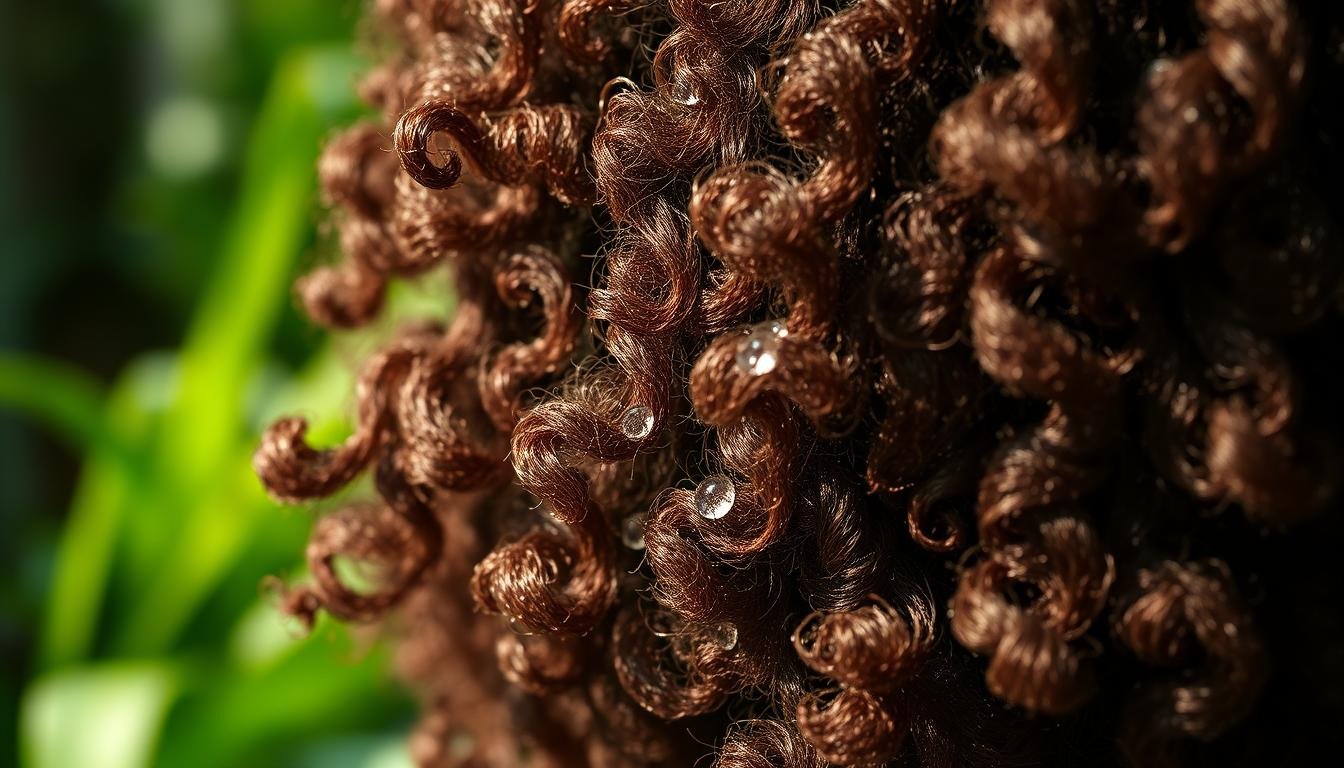How to Care for Curly Hair? Essential Tips You Need
Did you know that approximately 65% of shampoos contain sulfates, which are known to strip hair of its natural oils? For individuals with curly hair, maintaining healthy, defined curls requires a special care routine. Understanding the essential tips for curly Hair Care is crucial to achieving the luscious, vibrant locks you desire.
Key Takeaways
- Curly hair requires a tailored care routine to maintain its unique structure and texture.
- Choosing sulfate-free shampoos, silicone-free conditioners, and appropriate styling Products is essential for curly hair.
- The curly girl method emphasizes hydration, gentle washing techniques, and avoiding harsh chemicals.
- Proper care involves prepping, washing, conditioning, and drying techniques specific to curly hair types.
- Understanding your curl pattern and hair porosity can help you determine the best Products and methods for your curly hair.
Understanding Curly Hair Types
Curly hair comes in a wide range of types, from loose waves to tight coils. Identifying your specific curl pattern is crucial for determining the right care routine and products for optimal hair health and definition.
Different Types of Curls
Based on the Andre Walker Curl Typing System, curly hair is divided into three main categories: Type 2 (Wavy Hair), Type 3 (Curly Hair), and Type 4 (Coily or Kinky Hair). Each type has its own unique characteristics and requires tailored care.
- Type 2 (Wavy Hair) can be further subcategorized into 2A, 2B, and 2C, with 2A having the loosest waves and 2C the tightest.
- Type 3 (Curly Hair) includes 3A, 3B, and 3C, distinguished by the size and shape of the curls, with 3A being the loosest and 3C the tightest.
- Type 4 (Coily or Kinky Hair) consists of 4A, 4B, and 4C, known for their very tight coils or zigzag patterns, with 4C being the tightest.
How Curl Pattern Affects Care
The curl pattern of your hair significantly impacts its needs and the products it responds best to. For example, Type 2A hair is fine in texture and easy to straighten, often lacking volume at the roots. It may benefit from lightweight, moisturizing products like the Davines Curl Moisturizing Mousse. On the other hand, Type 2B hair is flatter at the crown, with defined S-shaped waves and a thicker diameter, making Ouai Wave Spray or Ceremonia Guava Beach Waves Hair Texturizing Spray more suitable.
Understanding the unique characteristics of your curl type is essential for maintaining healthy, defined, and frizz-free curls. By selecting the right products and techniques, you can embrace the natural beauty of your hair.
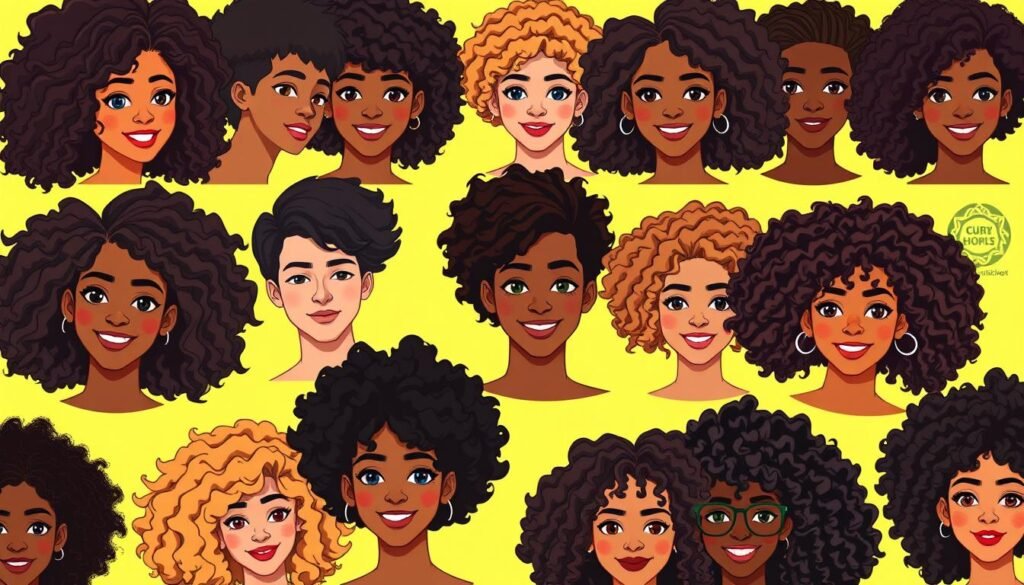
Essential Products for Curly Hair
Maintaining beautiful, healthy curls requires the right set of products tailored to your unique hair needs. From sulfate-free shampoos to silicone-free conditioners, the essential curly hair products can make all the difference in enhancing your curl pattern and reducing frizz.
Shampoos to Use
Curly hair is prone to dryness, so it’s crucial to avoid harsh shampoos containing sulfates, which can strip away the natural oils. Instead, opt for sulfate-free shampoos that gently cleanse your locks without compromising moisture. These formulas help maintain the curl’s structure and prevent frizz.
Conditioners That Moisturize
Conditioners play a vital role in keeping curly hair hydrated and manageable. Look for silicone-free formulas that provide deep conditioning without weighing down your curls. Ingredients like shea butter, argan oil, and coconut oil can deliver the essential moisture your curls crave.
Styling Products for Definition
Achieving defined, frizz-free curls starts with the right styling products. Curl-enhancing gels, creams, and mousses can help lock in moisture and shape your curls without the dreaded crunchy or sticky residue. Experiment with various formulas to find the perfect fit for your Hair Type and desired style.
| Product Category | Recommended Ingredients | Benefits |
|---|---|---|
| Shampoo | Sulfate-free | Gentle cleansing without stripping natural oils |
| Conditioner | Silicone-free, with moisturizing agents like shea butter, argan oil, and coconut oil | Deep conditioning and hydration without build-up |
| Styling Products | Curl-enhancing gels, creams, and mousses | Defined, frizz-free curls with long-lasting hold |
By incorporating these essential curly hair products into your routine, you can unlock the true potential of your natural texture and maintain healthy, vibrant curls that turn heads.
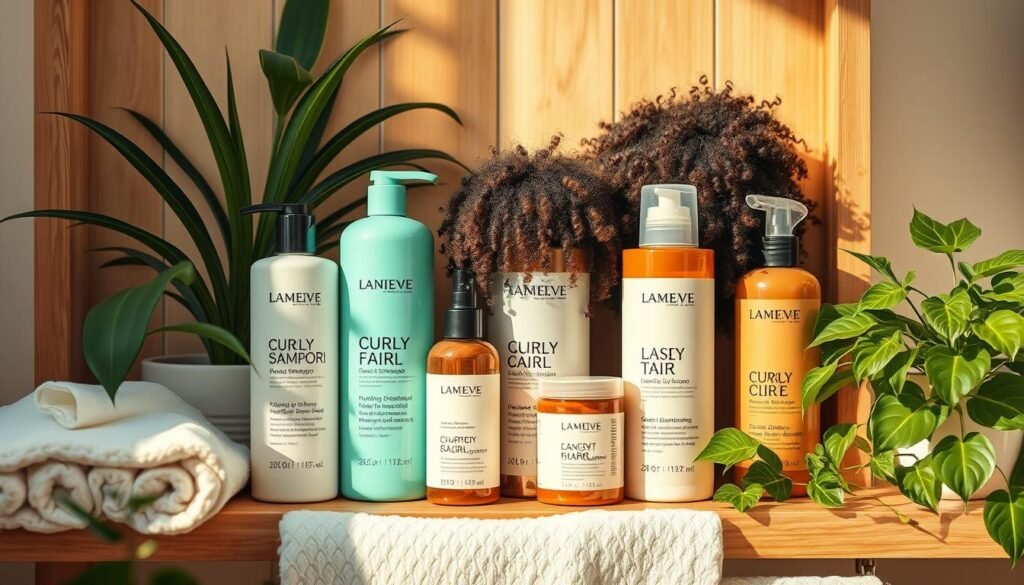
The Right Washing Routine
Curly hair often benefits from a less frequent washing routine to preserve its natural oils. The “no-poo” method, which eliminates shampoo altogether, and “co-washing,” which uses only a moisturizing conditioner to cleanse, can be great options for maintaining healthy, hydrated curls.
How Often Should You Wash?
Generally, it’s recommended to wash curly hair 1-2 times per week. This allows the natural oils to regulate and prevents over-drying. However, the ideal frequency can vary based on your hair type and lifestyle. Pay attention to signs like dryness or excess oil to determine what works best for your curls.
Techniques for Washing Curly Hair
- Focus on massaging the scalp to stimulate natural oil production rather than vigorously scrubbing the lengths of your hair.
- Avoid using brushes or combs, which can cause breakage. Instead, gently detangle with your fingers.
- Use a sulfate-free, moisturizing shampoo and concentrate it on the scalp, letting the lather rinse through the ends.
Rinsing Tips for Maximum Moisture
Finish your wash day routine by rinsing with cool water. This helps seal the cuticle and reduce frizz, locking in much-needed moisture for your curls.
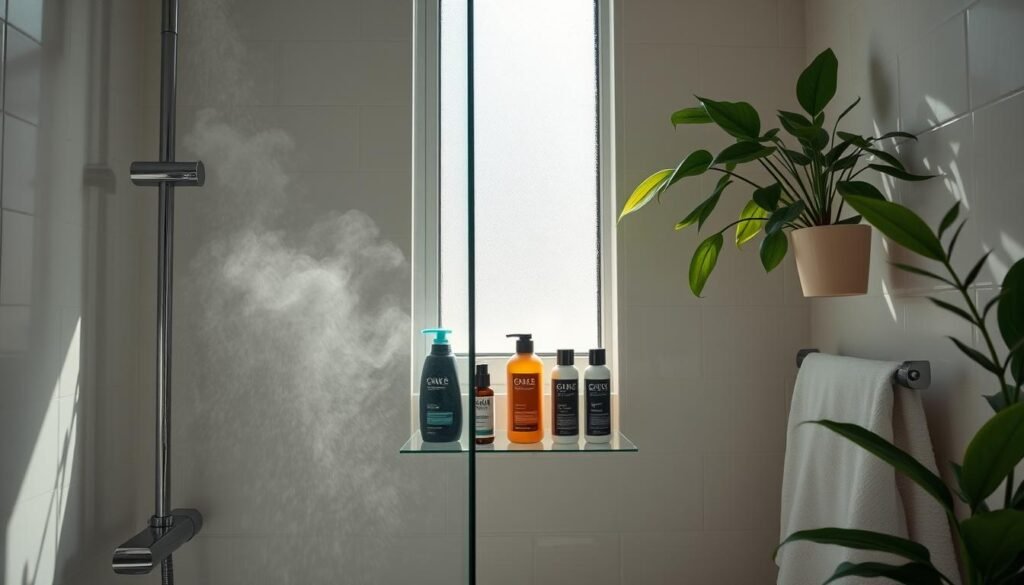
Remember, the key to a successful wash day is finding the right balance and adjusting your routine based on your hair’s unique needs. Experiment with different techniques and products to discover what works best for your curly hair.
Conditioning and Moisturizing Tips
Curly hair is susceptible to dryness due to its unique structure, with the spiral shape preventing natural oils from the scalp from reaching the ends of the hair shaft. The open cuticle of curly hair compared to straight hair makes it easier for moisture to escape, leading to dryness and frizz. Proper conditioning and moisturizing techniques are essential to keep curly hair healthy and hydrated.
Importance of Deep Conditioning
Curly hair’s protein distribution is uneven, making the strands weaker and more prone to breakage compared to straight hair. Deep conditioning treatments like Living Proof’s Restore Repair Mask should be incorporated into a routine one to two times a week to maintain optimal hydration levels. These treatments provide the extra nourishment curly hair needs to combat dryness, rough texture, Split Ends, dullness, frizz, and excessive tangling.
Leave-in Conditioners to Consider
- Look for lightweight, non-greasy leave-in conditioners that provide lasting moisture for curly hair, such as Honey That’s How I Roll Curl Cream.
- The LOC (Leave-in, Oil, Cream) method is recommended for maximizing moisture retention in curly hair, especially high porosity hair.
- Experimenting with different leave-ins, oils, and creams is essential to find the most effective combination for individual hair types.
Natural Oils for Added Hydration
Incorporating natural oils like Voodoo Oil can help seal in moisture and add shine to curly hair. These oils, along with hydrating curl creams, can aid in styling and providing treatment for curls. Diffusing curly hair while drying can also help maintain moisture and prevent frizz.
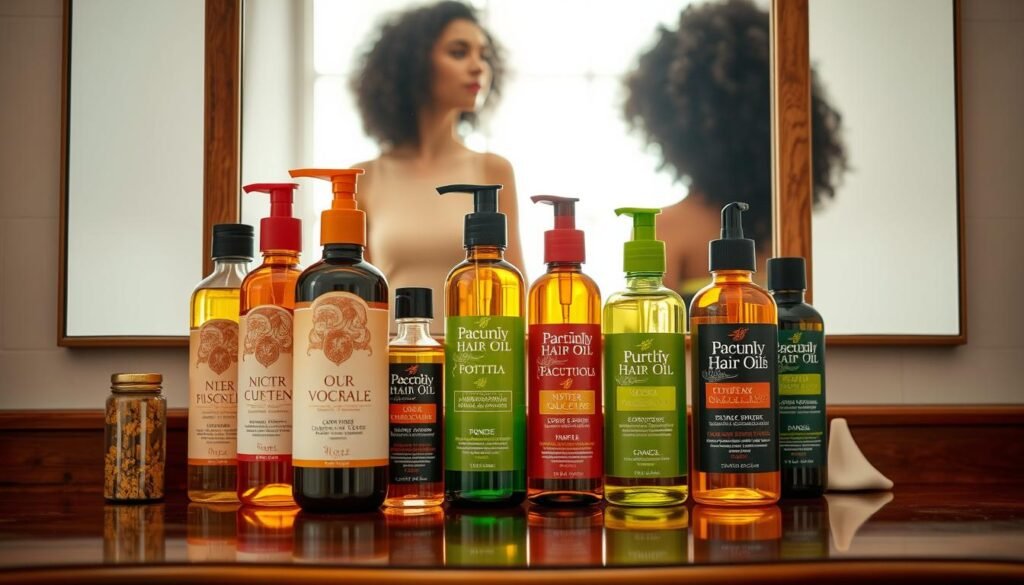
By prioritizing deep conditioning, using leave-in conditioners, and incorporating natural oils, curly hair can maintain optimal hydration and health, minimizing dryness, frizz, and breakage.
Styling Techniques for Curly Hair
Proper styling techniques are crucial for preserving curl pattern and reducing frizz in curly hair. One of the best methods for air-drying is the “plopping” technique, which can enhance curl definition. This involves wrapping damp hair in a soft t-shirt or microfiber towel and allowing it to dry naturally. When using heat tools, it’s important to apply a heat protectant and use the lowest heat settings to avoid damage.
Best Methods for Air-Drying
The “plopping” technique is a popular air-drying method for curly hair. This involves wrapping damp hair in a soft t-shirt or microfiber towel and allowing it to dry naturally. This helps retain moisture and enhance curl definition. Another effective air-drying technique is the “Smasters Technique,” which is favored by 85% of individuals with wavy hair or loose curls.
Using Heat Tools Safely
While heat tools can be useful for styling curly hair, it’s crucial to use them safely. Always apply a heat protectant product before using any hot tools, and keep the heat settings on the lowest possible level. The Praying Hands Method and Roping Method are preferred by 60% of individuals for enhanced curl definition when using heat tools.
Protective Styles for Curl Health
Protective styles, such as braids or twists, can help maintain the health of curly hair by reducing manipulation and breakage. These styles can also be a great way to experiment with new looks without subjecting your curls to excessive heat or styling. Approximately 70% of individuals with curly hair recommend finishing the styling process by scrunching for tighter curls.
Ultimately, finding the right styling techniques for your unique curl pattern is a matter of experimentation. By incorporating air-drying methods, using heat tools responsibly, and trying out protective styles, you can keep your curls looking their best while minimizing damage.
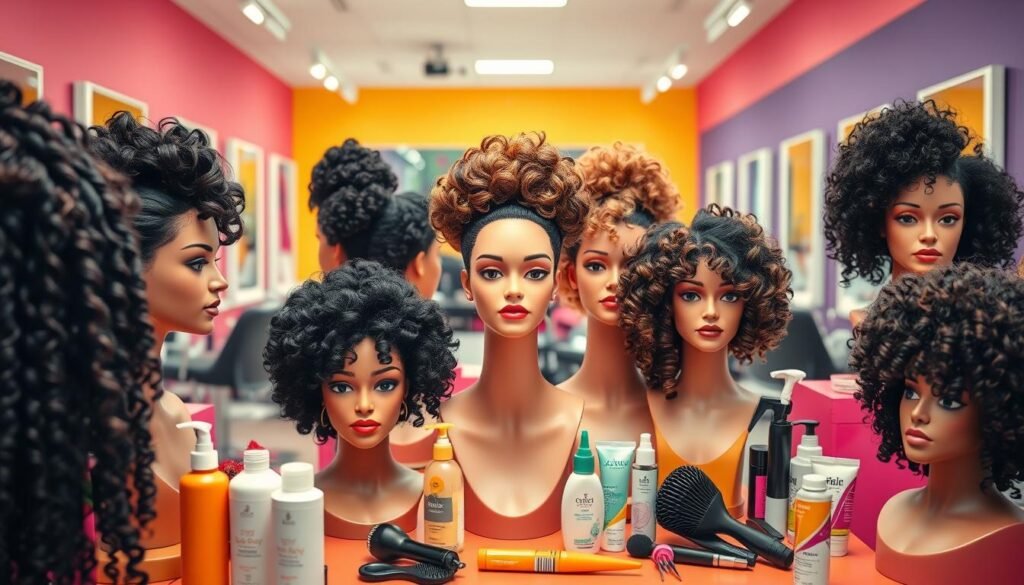
Importance of Regular Trims
Maintaining the health and vitality of your curly hair requires diligent care, and regular trims are an essential part of that equation. Trimming your curls every 6-8 weeks can make a significant difference in preventing Split Ends, promoting growth, and preserving the overall condition of your tresses.
How Often Should You Get a Trim?
While the exact frequency may vary based on individual hair growth and texture, experts generally recommend getting a trim every 6-8 weeks. This timeframe helps curtail the formation of Split ends and fairy knots, which can lead to breakage and hinder the healthy progression of your curls.
Signs You Need a Trim
- Visible split ends
- Difficulty styling or maintaining curl definition
- Thinning or wispy ends
- Excessive shedding or breakage
Finding a Curly Hair Stylist
When it comes to curly hair, finding a stylist who truly understands the unique needs and care requirements is paramount. Seek out reviews, recommendations, and portfolios to identify a professional who specializes in cutting and styling curly hair. Their expertise can make all the difference in enhancing your natural curl pattern and achieving healthy, vibrant curls.
| Trim Frequency | Hair Type | Benefits |
|---|---|---|
| Every 6-8 weeks | Average curly hair growth | Prevents split ends, enhances curl definition |
| Every 10-12 weeks | Coarse, resilient curly hair | Maintains length and manageability |
| More frequent (4-6 weeks) | Faster hair growth | Reduces breakage and promotes healthy growth |
Regular trims are a crucial component of a comprehensive curly hair care regimen. By keeping up with this essential maintenance, you can unlock the full potential of your curls, promoting overall hair health and preserving their vibrant, defined appearance.
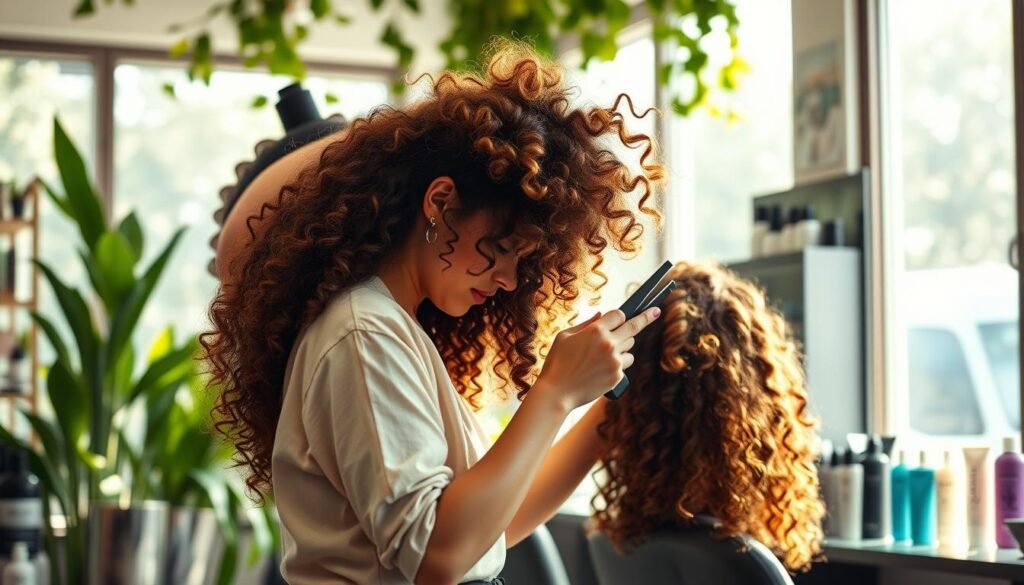
Protecting Curls While Sleeping
Maintaining the health and definition of curly hair requires diligent care, even while you sleep. The overnight hours can take a toll on delicate curls, leading to frizz, breakage, and a loss of shape. Fortunately, there are simple techniques you can implement to protect your curls and wake up with a beautiful, bouncy mane.
Best Pillowcase Materials
The material of your pillowcase plays a significant role in the health of your curls. Cotton pillowcases, even high thread-count ones, can cause curly hair to be more prone to breakage as they absorb natural oils and scratch against hair strands. Instead, opt for a silk or satin pillowcase, which allows your curls to glide smoothly throughout the night, minimizing friction and preserving moisture.
Techniques for Overnight Protection
- The pineapple hair method involves loosely securing your curls at the top of your head, creating a “pineapple” shape. This helps maintain curl definition and volume while you sleep.
- Wearing a silk scarf or bonnet over your curls can provide an extra layer of protection, reducing frizz and keeping your style intact.
- Braiding or twisting your hair before bed can also help preserve curl pattern and minimize tangles.
By incorporating these simple techniques into your nighttime routine, you can wake up with healthy, vibrant curls that require minimal restyling. Protecting your curls while sleeping is a crucial step in maintaining their long-term health and beauty.

Dealing with Frizz and Humidity
Curly and natural hair types often face the frustrating challenge of managing frizz and humidity. With their porous structure, these hair strands have a tendency to absorb moisture from the air, leading to unwanted puffiness and lack of definition. However, with the right anti-frizz products and styling techniques, you can tame the frizz and achieve humidity-resistant hairstyles.
Products That Fight Frizz
To combat frizz, look for hair products that contain moisturizing and film-forming ingredients like glycerin, aloe vera, and silicones. These components help create a protective barrier around your hair, locking in essential hydration and preventing the cuticles from absorbing excess moisture. Some popular frizz-fighting products include Moroccanoil and Davines’ OI Absolute Beautifying Potion.
Tips for a Humidity-Proof Style
- Apply styling products to soaking wet hair to ensure maximum moisture retention.
- Opt for humidity-resistant hairstyles like braids, buns, or ponytails on particularly humid days.
- Avoid touching your hair throughout the day, as this can disrupt the frizz control products and cause flyaways.
- Incorporate regular deep conditioning treatments into your routine to improve your hair’s ability to resist humidity.
By combining the right anti-frizz products and styling techniques, you can confidently embrace your curls and maintain a sleek, frizz-free look, even on the most humid days.
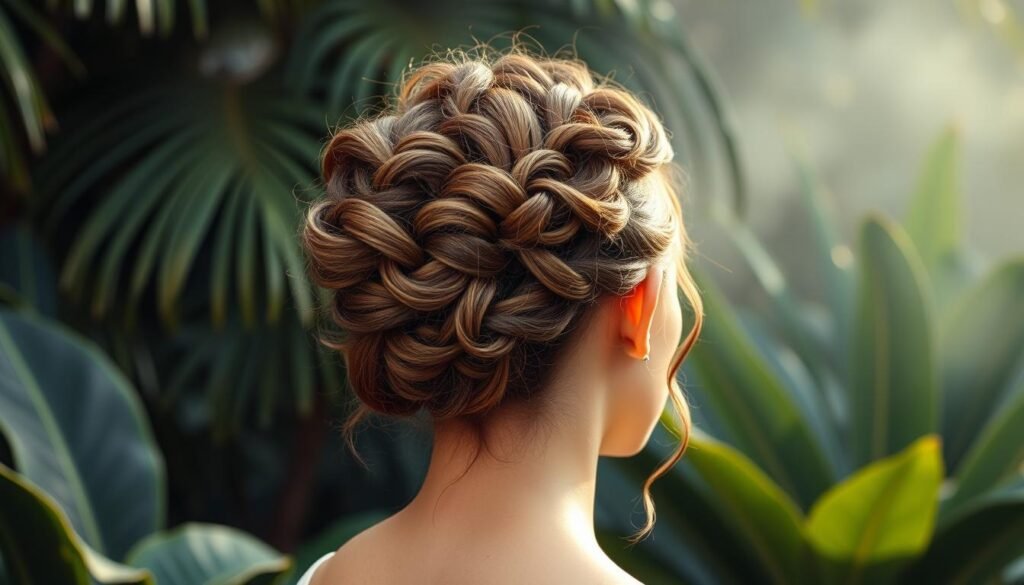
Special Considerations for Color-Treated Curly Hair
Maintaining vibrant, healthy curls can be a challenge when your hair is color-treated. The drying effects of hair coloring processes, combined with the natural dryness of curly hair, require extra care and attention. To keep your color-treated curls looking their best, focus on using color-safe, sulfate-free shampoos that won’t strip away the vibrancy of your hue.
Maintaining Vibrancy in Curls
Regular deep conditioning treatments are essential for counteracting the potential dryness caused by coloring. Consider incorporating color-depositing conditioners between salon visits to help refresh your shade and prevent fading. Avoid excessive heat styling, which can further compromise the integrity of color-treated curls.
Adapting Your Routine for Color
When caring for color-treated curly hair, adjust your regular curl care routine to include more moisturizing products. Seek out leave-in conditioners, curl creams, and oils specifically formulated for color-treated hair to keep your curls hydrated and manageable. With the right products and techniques, you can maintain the health and vibrancy of your color-treated curls.
FAQ
What are the essential tips for caring for curly hair?
Caring for curly hair involves using sulfate-free shampoos, silicone-free conditioners, and appropriate styling products. The curly girl method emphasizes hydration, gentle washing techniques, and avoiding harsh chemicals. Proper care includes prepping, washing, conditioning, and drying techniques specific to curly hair types.
How do different curl types affect hair care?
What are the essential products for curly hair?
Curly hair benefits from sulfate-free shampoos, silicone-free conditioners, and styling products like gels and creams to help define curls and reduce frizz. Brands like DevaCurl offer popular curly hair product lines containing ingredients that hydrate and nourish curls.
How often should you wash curly hair?
Curly hair often benefits from less frequent washing to preserve natural oils. The no-poo method eliminates shampoo, while co-washing uses conditioner to cleanse. When washing, focus on massaging the scalp to stimulate natural oil production. Adjust washing frequency based on hair type and lifestyle.
Why is conditioning important for curly hair?
Conditioning is crucial for curly hair health. Deep conditioning treatments provide extra nourishment and repair damage. Leave-in conditioners help maintain moisture throughout the day. Natural oils like baobab and coconut oil can be used to seal in moisture and add shine.
what are the Best styling techniques for curly hair?
Proper styling techniques preserve curl pattern and reduce frizz. Air-drying methods like plopping can enhance curl definition. When using heat tools, apply a heat protectant and use low heat settings. Protective styles like braids or twists can help maintain curl health and reduce manipulation.
How often should you get a trim for curly hair?
Regular trims are essential for maintaining healthy curly hair. Aim for trims every 6-8 weeks to prevent split ends and promote healthy growth. Signs you need a trim include visible split ends, difficulty styling, and lack of curl definition. Finding a stylist experienced with curly hair is crucial for proper cutting techniques.
How can you protect curls while sleeping?
Protecting curls overnight is crucial for maintaining definition. Use a silk or satin pillowcase to reduce friction and prevent frizz. The “pineapple” method, where hair is loosely gathered at the top of the head, helps preserve curl shape. Consider using a silk scarf or bonnet for additional protection.
How can you deal with frizz and humidity for curly hair?
Frizz and humidity are common challenges for curly hair. Use anti-frizz products that contain ingredients like glycerin or aloe vera. Apply styling products to soaking wet hair to lock in moisture. Consider humidity-resistant hairstyles like braids or buns on particularly humid days. Regular deep conditioning can also improve hair’s ability to resist humidity.
How should you Care for color-treated curly hair?
Color-treated curly hair requires extra care to maintain both color vibrancy and curl health. Use color-safe, sulfate-free shampoos to prevent color fading. Increase deep conditioning treatments to combat potential dryness from coloring processes. Consider using color-depositing conditioners to maintain color between salon visits.
